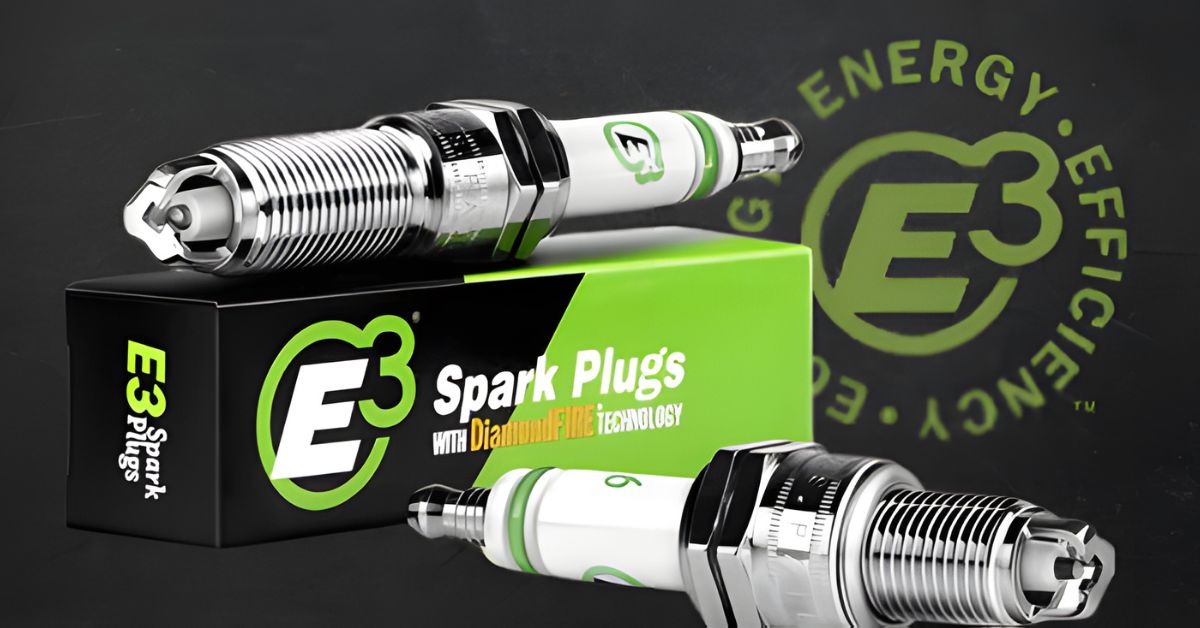Spark plugs, though small, play a pivotal role in your engine’s performance and efficiency. These critical components form the heart of the ignition system in any gasoline-powered vehicle. They generate the electric spark essential for igniting the air-fuel mixture within the engine's combustion chamber.
One of the most important components of the spark plug is the insulator. Keep reading to learn the role of the insulator in spark plugs, why the material is so important, and the different types of insulator materials commonly found in spark plugs.
The Insulator's Role in Spark Plugs
Before we get into common insulator materials, what does the insulator do for the spark plug? The insulator is a crucial element that ensures optimal engine performance through its dual functionality. It acts as an electrical insulator, preventing the high-voltage spark from short-circuiting to the spark plug's metal body, thereby ensuring the spark occurs precisely at the electrode gap.
The insulator must endure the extreme temperatures and pressures of the combustion chamber. A robust insulator is essential for effective spark plug performance, leading to improved engine efficiency, better fuel economy, and reduced emissions.

The Insulator Material: Why it Matters
The spark plug insulator material is critical to the performance, quality, and application of the spark plug, as it directly influences the component’s ability to withstand extreme operating conditions. The spark plug material must have thermal and electrical insulating properties to ensure precise spark generation under strenuous and harsh conditions.
This spark plug material is vital for consistent engine engagement, smoother acceleration, and optimal fuel combustion, collectively enhancing overall engine performance and longevity. Furthermore, high-quality insulator materials mitigate the risks of misfires and electrode wear, increasing the durability and life span of the spark plug, and thus ensuring sustained engine efficiency and reduced maintenance costs. Without a robust insulator material, a spark plug cannot reliably perform across diverse applications, from everyday commuting to high-performance motorsports, leading to compromised engine functionality.
Types of Spark Plug Insulator Materials
Vehicle owners searching for the ideal spark plug for their application have quite a few options. We’ll explain the properties and qualities of some of the different types of insulator materials found in spark plugs below.
Alumina Oxide Ceramic
Alumina oxide ceramic stands as the predominant insulator material in spark plugs, renowned for its superior thermal conductivity and electrical insulation properties. Its capability to endure the elevated temperatures inherent to combustion engines underscores its stability under extreme conditions, making it the material of choice for both standard and high-performance spark plugs. Another reason it’s one of the most popular options is it’s a relatively affordable material, making it a cost-effective and widely available option that offers a balance of performance and affordability.
Silicon Nitride
Silicon nitride is a high-performance ceramic material distinguished by its exceptional thermal shock resistance and mechanical strength. For this reason, racecars and heavy-duty vehicles typically utilize high-performance spark plugs with this material.
Silicon nitride's resilience to rapid temperature fluctuations and substantial mechanical stresses makes it ideal for engines operating under extreme conditions. Despite its superior performance attributes, its higher cost confines its application to specialized uses.
Mica
Mica, while less prevalent in modern spark plugs compared to ceramic materials, remains a pertinent insulator in specific applications due to its commendable dielectric strength and thermal resistance. Its proficiency in withstanding high temperatures and ensuring reliable electrical insulation renders it suitable for select high-performance engines. However, the shift towards more advanced ceramic materials, which offer enhanced overall performance, has led to a reduced reliance on mica.
Boron Nitride
Many mechanics and spark plug experts praise boron nitride for its exceptional thermal conductivity and electrical insulating properties. This advanced material is frequently employed in high-performance applications requiring superior heat dissipation.
Despite its outstanding attributes, boron nitride is more expensive and less common than alumina oxide. Its elevated cost confines its application to specialized spark plugs designed for extreme conditions, such as those found in racing engines or industrial machinery.
Magnesium Oxide
Magnesium oxide offers commendable thermal conductivity and electrical insulation, but it is typically used in conjunction with other materials rather than serving as a primary insulator for spark plugs. Its capability to enhance the thermal properties of composite materials makes it a crucial component in high-performance spark plugs. Nevertheless, magnesium oxide alone lacks the mechanical strength necessary for most modern spark plug applications.
Zirconia-Toughened Alumina (ZTA)
Zirconia-toughened alumina (ZTA) merges the advantages of zirconia and alumina, resulting in a material with augmented toughness and thermal and mechanical properties. This synergy renders ZTA suitable for high-stress applications where standard alumina oxide might be inadequate. The superior durability and performance of ZTA make it an ideal choice for high-performance engines and applications subjected to extreme conditions.

Performance Comparison
Gaining an understanding of the performance variances among different insulator materials is crucial for making informed decisions when selecting spark plugs for your vehicle. Alumina oxide ceramic offers balanced performance with excellent thermal and electrical properties, making it apt for most standard applications.
Silicon nitride, conversely, excels in high-performance environments due to its unrivaled mechanical strength and thermal shock resistance. While less common, mica and boron nitride provide unique advantages in specialized applications where their distinct properties are indispensable. Magnesium oxide enhances the performance of composite materials, and ZTA delivers exceptional toughness and durability for extreme conditions.
Tips for Selecting the Ideal Spark Plug Insulator for Your Vehicle
When selecting a spark plug insulator, assess your driving conditions to match the material with your vehicle's use, such as silicon nitride for racing or alumina oxide for standard applications. Consider the operating temperatures, opting for materials like silicon or boron nitride for high heat. Check your engine's specifications in the manual or consult a professional for recommendations.
Vehicle owners must also balance performance and cost, weighing the benefits of high-performance insulators against their premium prices to find the best fit for their needs and budget.
Discover Premium Aftermarket Spark Plugs at E3 Spark Plugs
A thorough understanding of the various insulator materials used in spark plugs can profoundly influence your engine's longevity and performance. Selecting the appropriate material tailored to your specific needs ensures optimal ignition, enhanced efficiency, and minimized engine wear. We hope our guide has taught you a few things about spark plug insulators and their various material options.
At E3 Spark Plugs, we offer a comprehensive selection of top-tier spark plugs tailored to meet diverse engine specifications. Whether you need plugs for your car, ATV spark plugs, or even plugs for your lawnmower, we’ve got you covered. Browse our selection, learn more about our technology, and talk to a spark plug expert at E3 Spark Plugs today.







